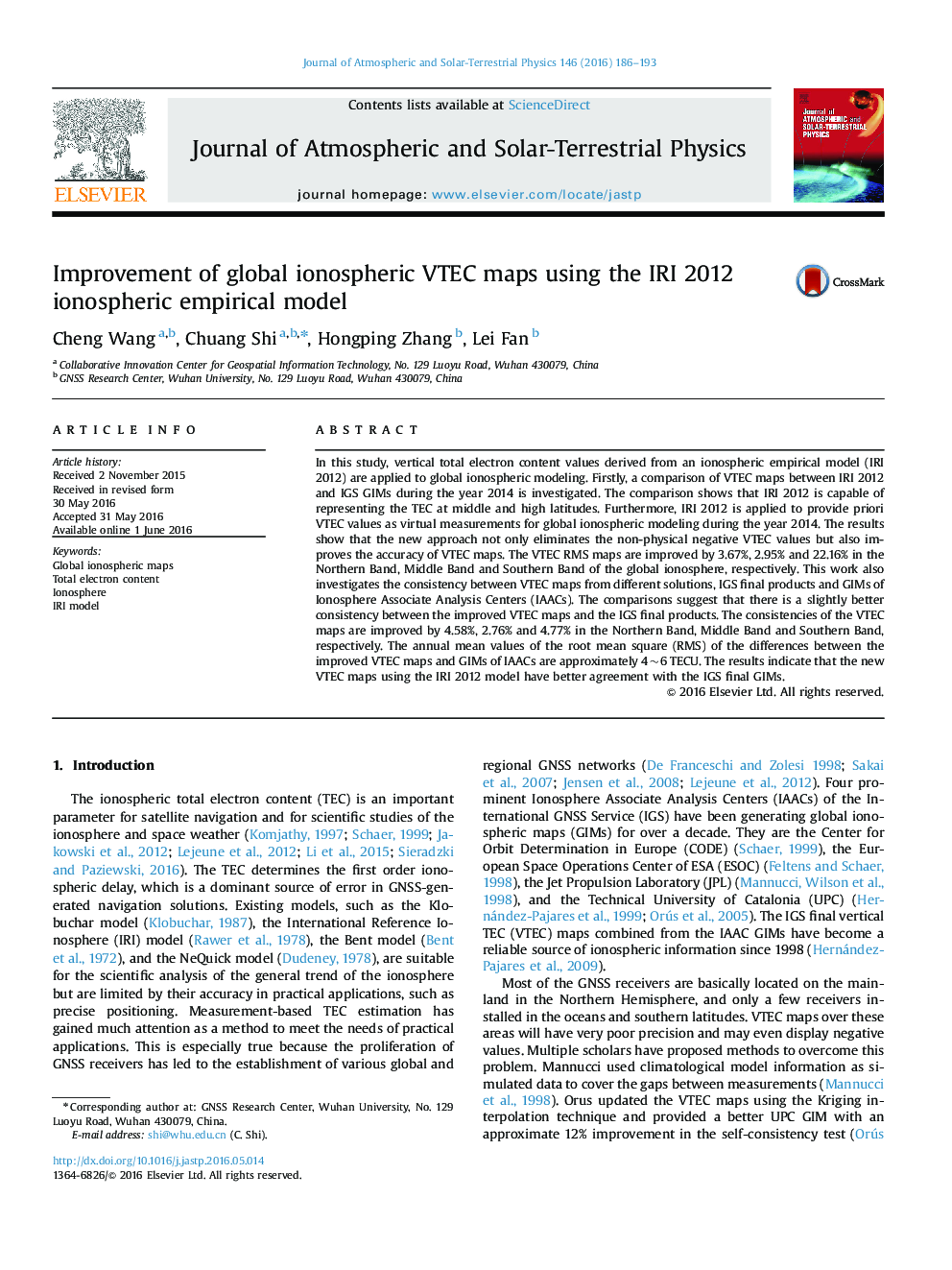| Article ID | Journal | Published Year | Pages | File Type |
|---|---|---|---|---|
| 1776207 | Journal of Atmospheric and Solar-Terrestrial Physics | 2016 | 8 Pages |
•An improvement solution for global ionospheric VTEC modeling is proposed.•The improved method overcomes non-physical negative VTEC values in VTEC maps.•New VTEC maps are more consistent with IGS final products.
In this study, vertical total electron content values derived from an ionospheric empirical model (IRI 2012) are applied to global ionospheric modeling. Firstly, a comparison of VTEC maps between IRI 2012 and IGS GIMs during the year 2014 is investigated. The comparison shows that IRI 2012 is capable of representing the TEC at middle and high latitudes. Furthermore, IRI 2012 is applied to provide priori VTEC values as virtual measurements for global ionospheric modeling during the year 2014. The results show that the new approach not only eliminates the non-physical negative VTEC values but also improves the accuracy of VTEC maps. The VTEC RMS maps are improved by 3.67%, 2.95% and 22.16% in the Northern Band, Middle Band and Southern Band of the global ionosphere, respectively. This work also investigates the consistency between VTEC maps from different solutions, IGS final products and GIMs of Ionosphere Associate Analysis Centers (IAACs). The comparisons suggest that there is a slightly better consistency between the improved VTEC maps and the IGS final products. The consistencies of the VTEC maps are improved by 4.58%, 2.76% and 4.77% in the Northern Band, Middle Band and Southern Band, respectively. The annual mean values of the root mean square (RMS) of the differences between the improved VTEC maps and GIMs of IAACs are approximately 4~6 TECU. The results indicate that the new VTEC maps using the IRI 2012 model have better agreement with the IGS final GIMs.
